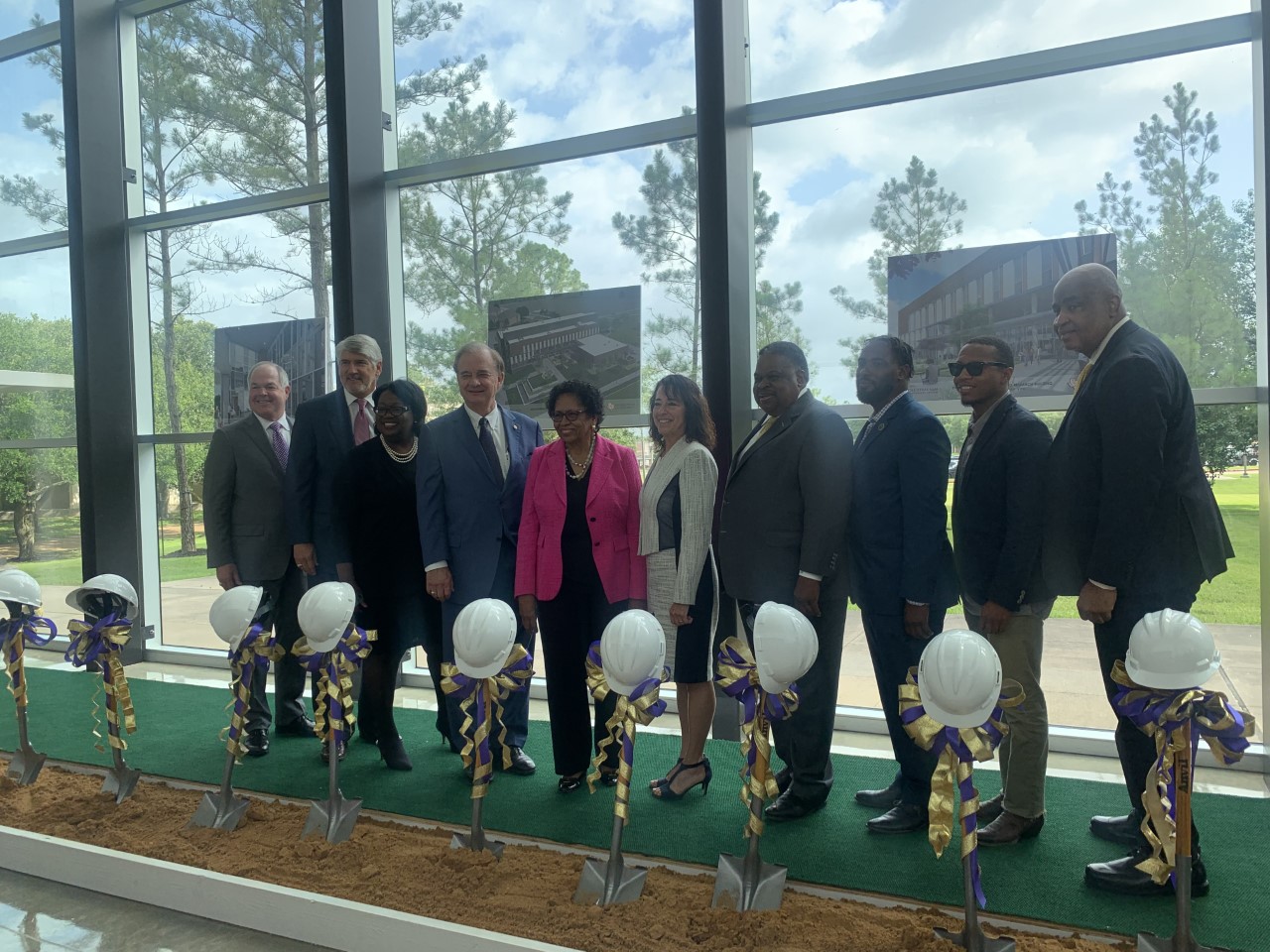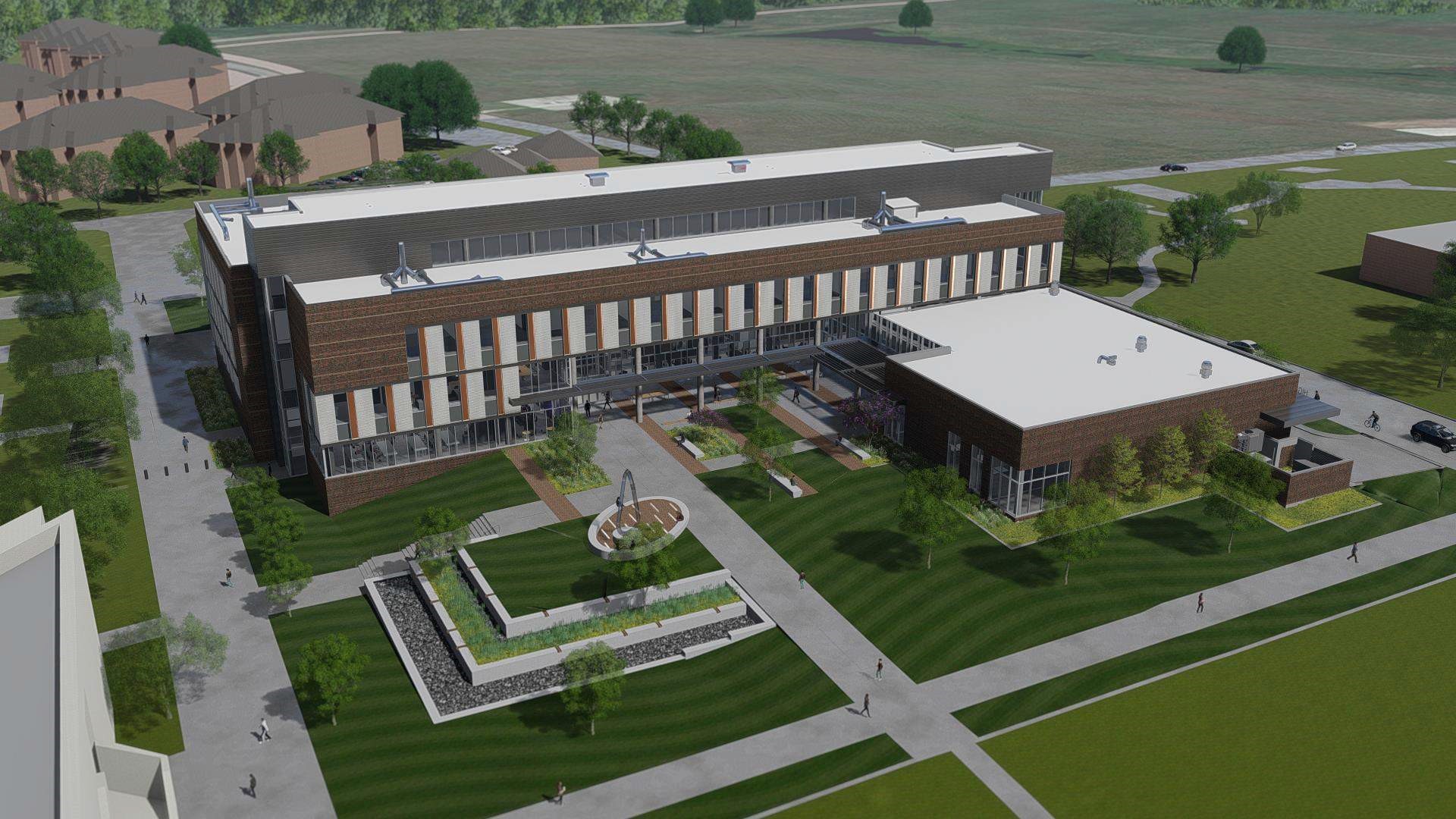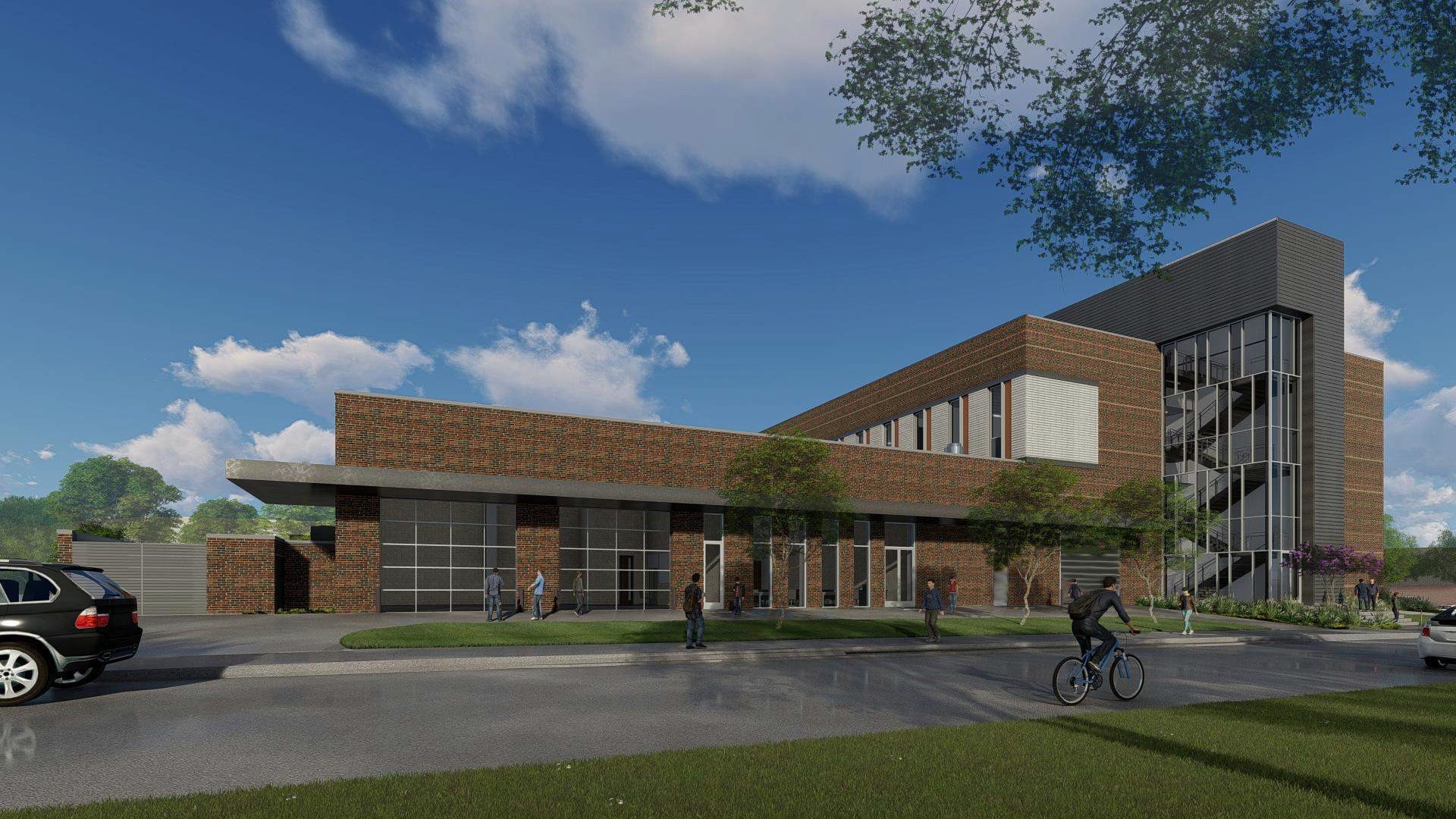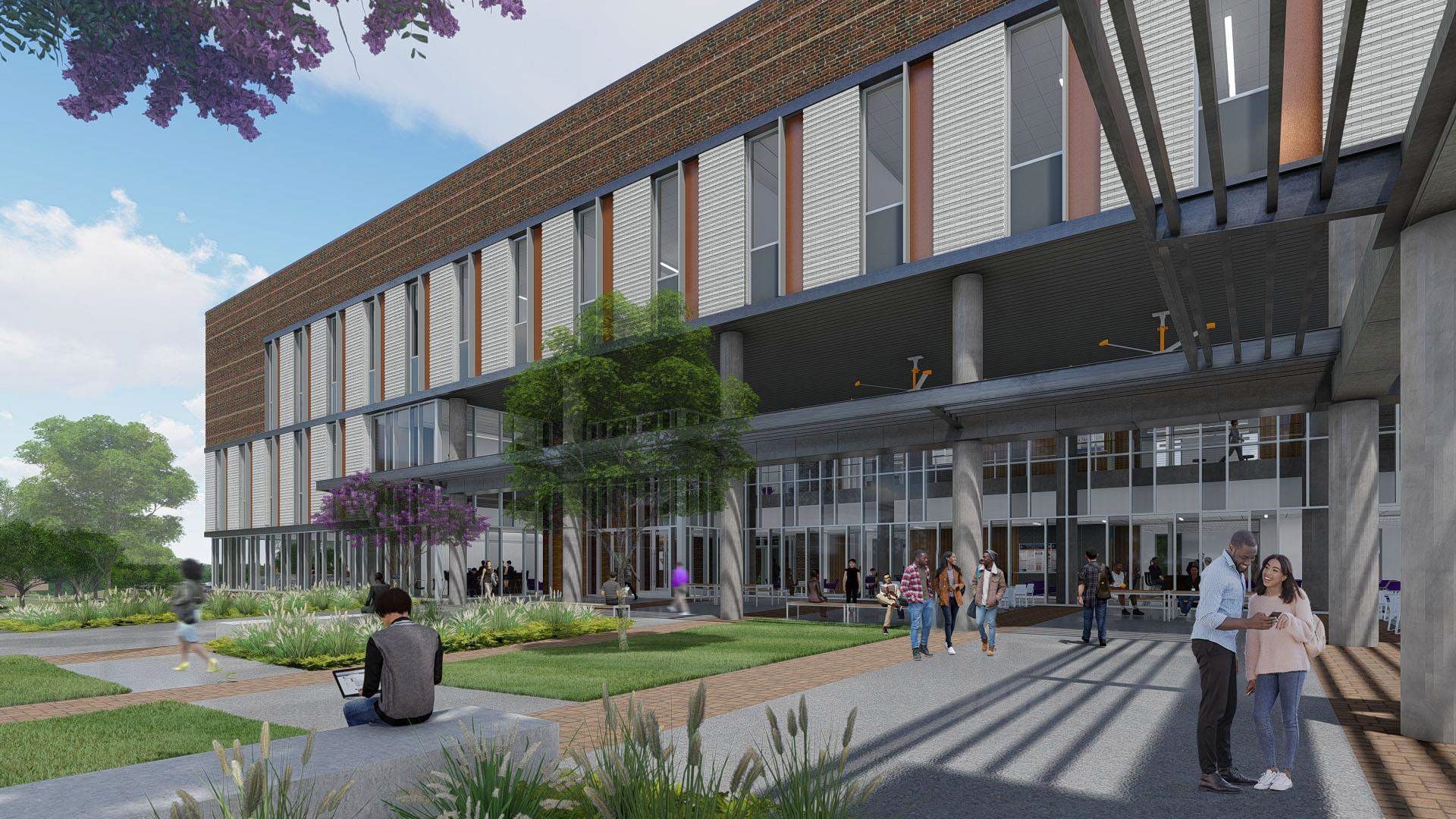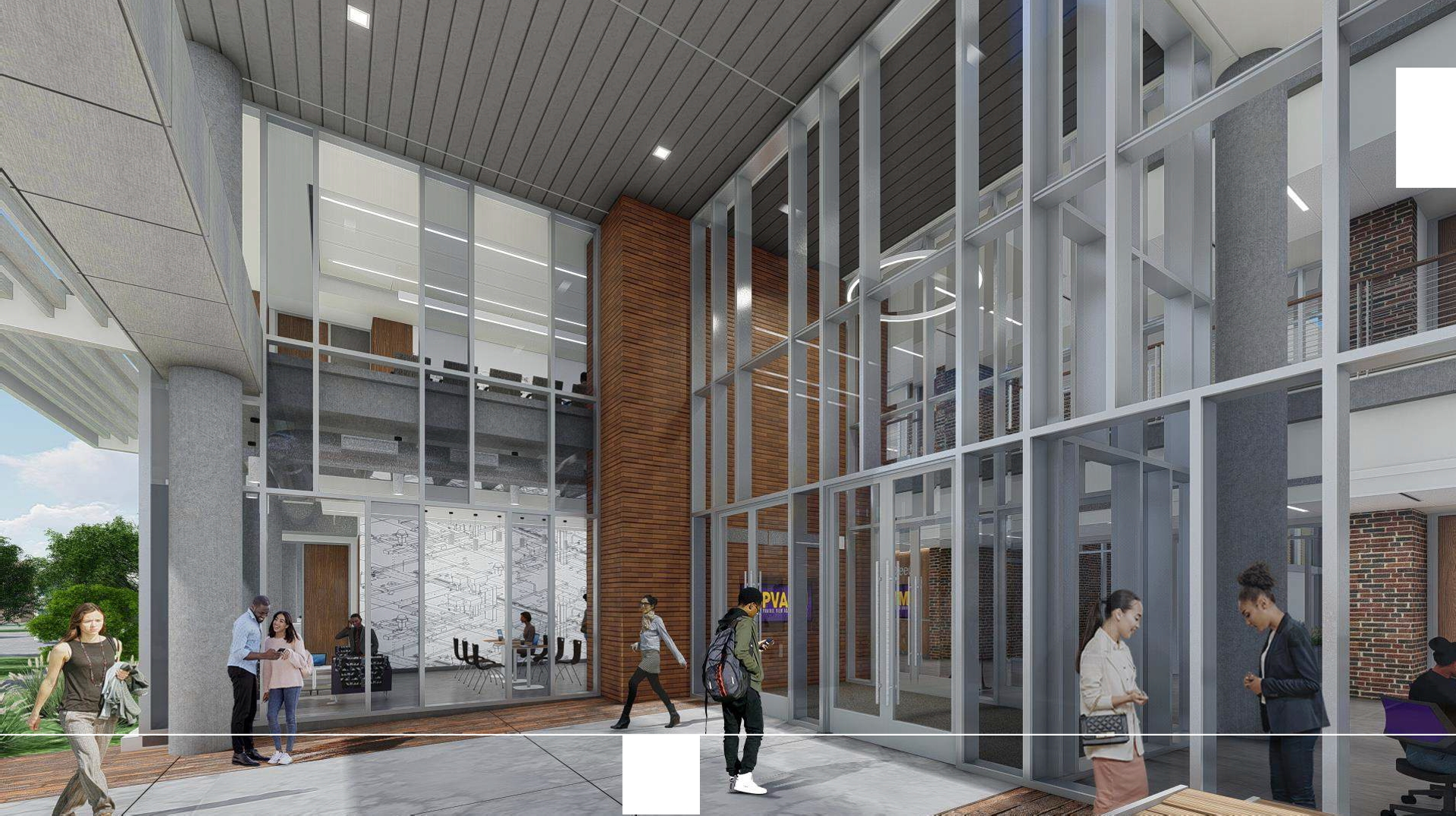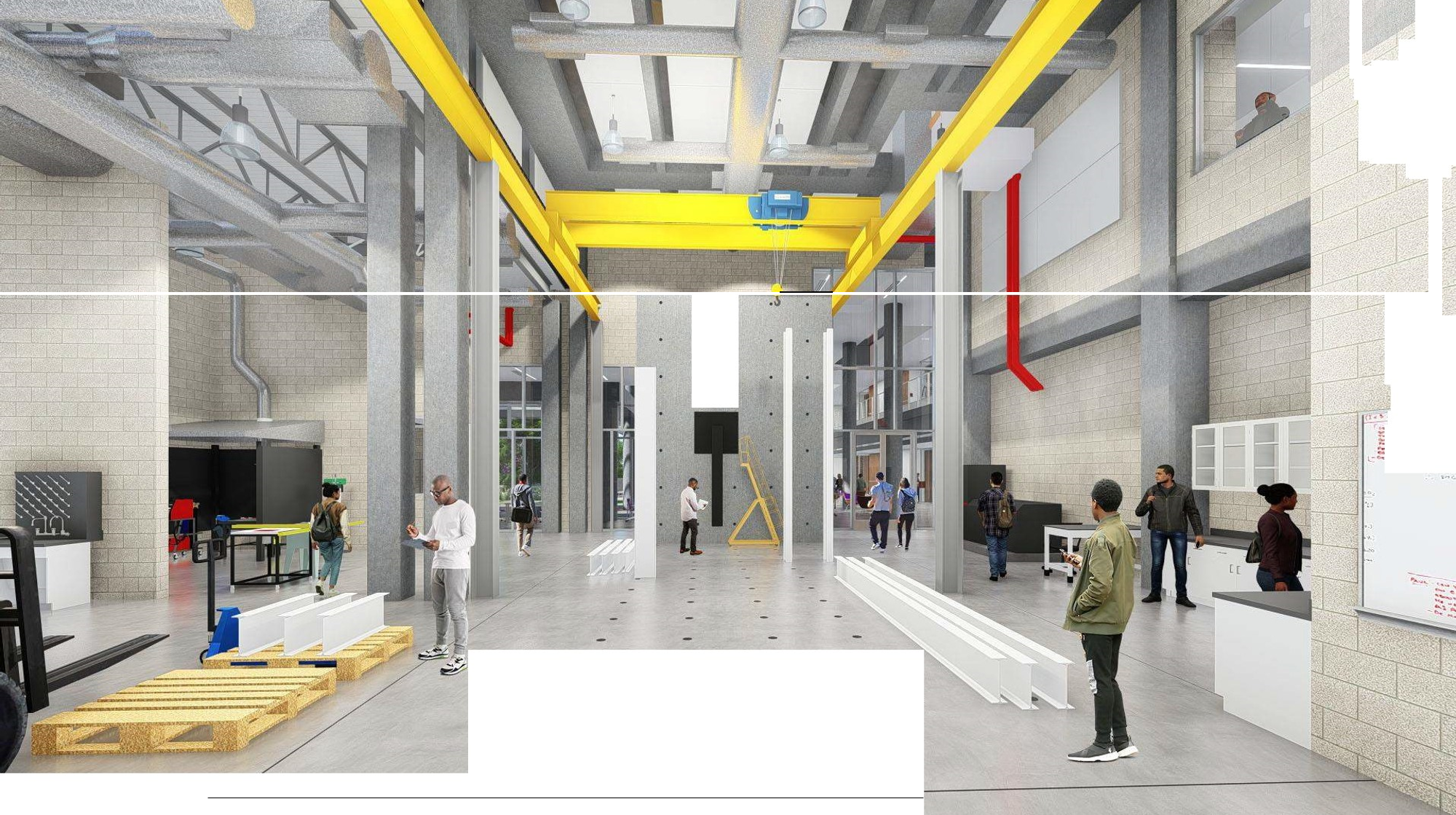Groundbreaking of the New Engineering Building
With more than a dozen gleaming shovels festooned with purple-and-gold bows, more than a dozen university and system administrators, donors, and student representatives ceremonially broke ground on June 8 on a $70 million classroom and research building for the Roy G. Perry College of Engineering. Designed by Stantec Architecture and to be built by Vaughn Construction, the 106,000 square-foot facility will offer lab spaces designed to support multidisciplinary research, a maker space to promote interdisciplinary collaboration and classroom spaces for direct instruction.
“I’ve launched engineering building projects at every campus that I’ve led,” remarked Prairie View A&M University (PVAMU) President Ruth J. Simmons at the groundbreaking ceremony, “but none of those buildings, at Brown or at Smith or even at Princeton, was as pivotal as the one we set out today to erect here at Prairie View. That’s because the intersection of the nation’s needs and these times, and what Prairie View can produce uniquely well, is represented in this project. If Prairie View could manage to excel and have such an impact for so many years with less than state-of-the-art facilities, imagine what it might achieve with facilities of the kind envisioned here.”
Among those voices heard at the ceremony (and a member of the group wielding shovels) was Joseph Dowell, a PVAMU doctoral student in the College of Engineering who earned his undergraduate and master’s degrees at Prairie View.“For us, this new building is a symbol of continued growth and evolution for our students and for the College of Engineering,” Dowell said. “This building will provide engineering students with the space and the tools necessary to stay at the forefront of meeting societal challenges, to stay in the position where Prairie View students like to be: on top of our game, and ahead of the game.”
Pamela Obiomon, dean of the Roy G. Perry College of Engineering, briefly touched on PVAMU’s “firmly planted roots” in industrial education in her opening remarks and said that the new building would “build on that legacy of innovation and technology.” Her thoughts were amplified by Elaine Mendoza, the immediate past chair of the Board of Regents for Texas A&M System, who predicted that new, high-tech facilities “will draw even more top talent to Prairie View’s already renowned engineering program.” “Investing in Prairie View’s future has been the priority of our system leadership, and today’s groundbreaking is evidence of that. It’s because we all rally around the vision that Prairie View will compete with the Ivies for top academic talent, faculty, and research dollars and that Prairie View is recognized not only as the top HBCU in Texas but as a top university in Texas, period.”
Chancellor John Sharp of the TAMU System listed Prairie View’s many building projects undertaken over the past decade (an investment of more than $300 million since 2009) and the skyward trajectory of per-student funding during that time. “So much has happened over the TAMU system, but speaking for myself and the regents assembled here today, the most important thing to the system as a whole has been Prairie View A&M University,” Sharp said. “As state support has dropped, the board of regents has stepped up, and they have helped take Prairie View to the next level.”
Much of the credit belongs to President Simmons, Sharp made clear, saying that her decision to come to Prairie View was “the shot heard round the world” and that the “psychological boost” to the university “cannot be overstated.” Simmons, though, preferred to keep the focus on the regents as well as to alumnus Roy G. Perry, another of the honored guests at the groundbreaking. “Your presence confirms the magnitude of this undertaking,” Simmons said.
“We are one of the largest producers of African American engineers in the country, that is well known, and it’s a source of pride, and we aspire to produce engineers of all backgrounds, and increasingly it’s evident we are doing just that,” Simmons continued. “It’s why our students are much sought-after and why our corporate partnerships and funding are expanding rapidly and robustly. I insisted, at some point early in my time at Prairie View, that this building be a near-term priority, and as soon as I said it, we received immediate support from the Chancellor, his staff, and the board of regents.”
Simmons gestured to the line of shovels. “Now, let’s get this show on the road!”
As currently programmed, the proposed Engineering Classroom and Research building totals 101,987 gross square feet (GSF), which translates to 61,192 assignable square feet (ASF) at 60% efficiency. The new Engineering Classroom and Research building will be constructed on the main campus in Prairie View, Texas sited west of EE O’Banion Street and south of DW Martin Street. Located in the Engineering Complex, this new facility will help create an engineering quad. Providing much-needed instructional and laboratory capacity for the Roy G. Perry College of Engineering, the new Engineering Classroom and Research building will support undergraduate education, student innovation, and emerging areas of research across engineering disciplines. Allotting almost two-thirds of the assignable square footage to direct instruction, the new facility is programmed to provide the University with six general instructional spaces and fourteen specialized instructional labs for the College of Engineering.
General instruction spaces for the University support a variety of pedagogical methods and include general purpose classrooms, cooperative learning classrooms, and computer classrooms. Specialized instructional labs are programmed to support the chemical engineering, mechanical engineering, and civil engineering departments. In addition to direct instructional space, another third of the new facility will be comprised of research lab space for faculty and graduate students. Research space is categorized by three typical distinctions: wet lab space, smart manufacturing+ materials + devices / sensors, and computational lab space. Developed according to modular planning principles, all research wet lab spaces are planned using a typical module to maximize bench space with specialty alcoves for fume hoods, biosafety cabinets, and bio fermentation as required by principal investigators. Applied to computational labs, this module provides space for reconfigurable workstations and server alcoves. Smart manufacturing + materials + device/ sensor labs represent a hybrid of both wet and computation research.

